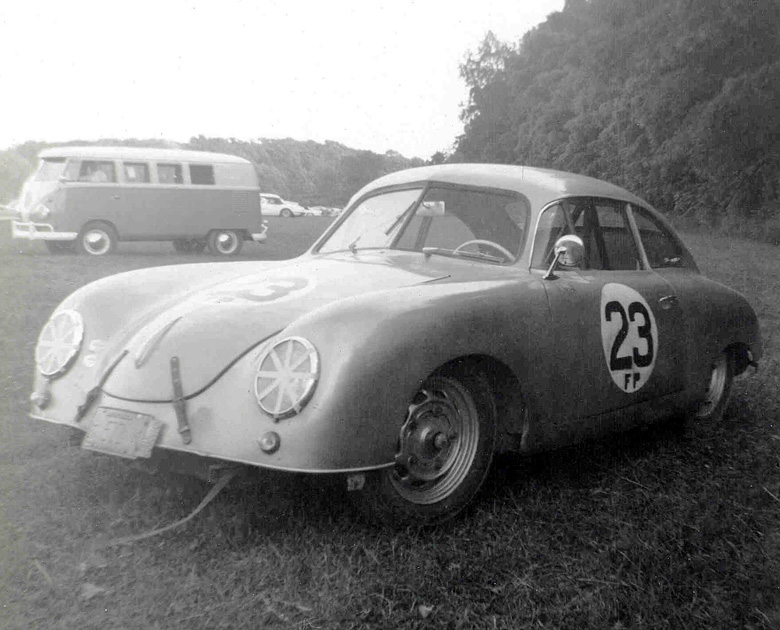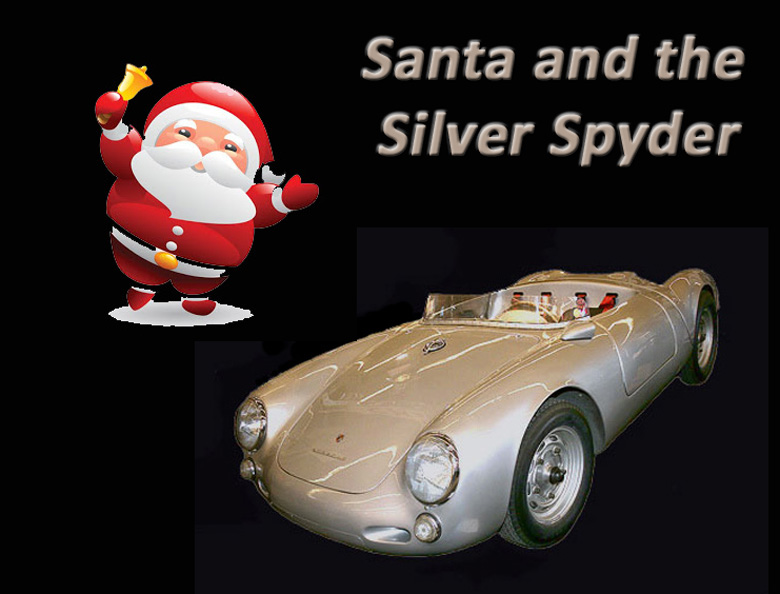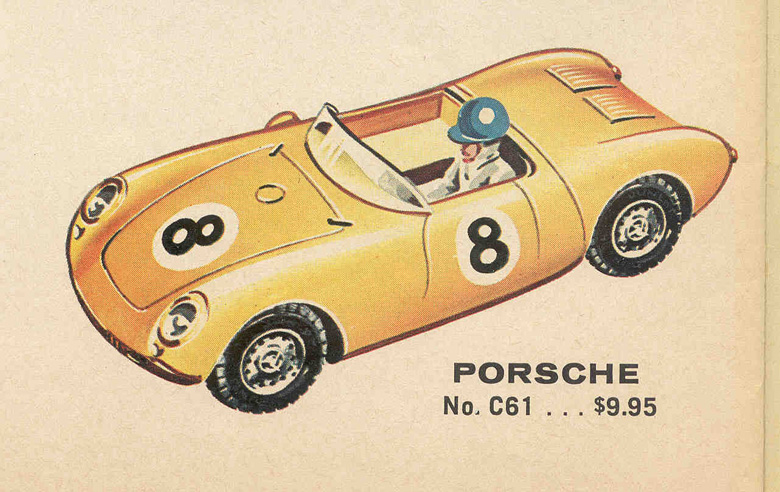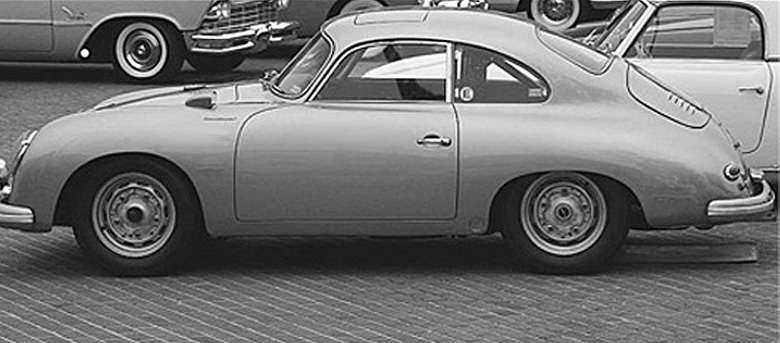By Pete Vack
From the Archives, 2009
The following true story is based on the recollections of John Wiech, who bent my ear for a few hours at a car meet last year. We originally published this in 2009 and it was one of our reader’s favorites. [Ed.]
The subject had started another family argument. Johnny had become enamored with a rare foreign car but it seemed no one knew exactly how to pronounce the name. It was German, or was it. “…It’s Austrian,” said his Dad. “But made in Stuttgart,” said Johnny, being careful to put the “sch” in. He reasoned that the sch in the car’s name might sound the same and the vowel at the end be pronounced. His older sister said otherwise. “It’s Porch, as in front porch or back porch, without the ‘e’.”
She always thought she was so smart.
So young Johnny, in those faraway days of 1955, wrote to the Porsche factory in Stuttgart, Germany, which was a long, long way from his home in a small, isolated American town. In time an answer was received on an onion skin airmail envelope that if opened correctly became the letter itself. Mr. Ferry Porsche’s secretary set the matter straight. “Our family’s name is pronounced Portia, as in Portia Faces Life.” Johnny’s mother pointed out that “Portia Faces Life” was not a potential prison sentence, but a popular radio and TV soap opera.
Having won the argument, Johnny went up to his room, which was protected from intruders like his sister by a sign that read, “Eintritt Verboten”, just like the one in the photograph he’d seen of the racing department door at the Porsche factory. Behind closed doors he would spend hours modifying his model Distler Porsche. His parents would sigh, thinking, well, it could be worse.
And sure enough, it got worse.
A few years later, about a month before Christmas, Johnny was at the hobby shop, drooling over the new Scalextric Porsche 550 Spyder he wanted to buy for his slot car track. A man stood next to him looking at the same yellow Porsche. Quite unexpectedly, the man asked Johnny, “Do you know what kind of car that is?” pointing to the slot car placed safely behind a glass counter.
“Of course I do,” said Johnny. “It’s a Porsche 550 Spyder!” He made sure he pronounced it “Portia.” He went on to say that the 550 Spyder was the first real competition Porsche and had four overhead cams.
“Well,” said the stranger, “I have the real car.”
“A real Porsche Spyder?” Johnny thought a minute. “With all due respect, sir, I kinda doubt that you actually have a Porsche 550 Spyder in this miserable little town where you don‘t even see Volkswagens!”
But being only thirteen, respectful, and this being the 1950s, Johnny did not actually say this. He said instead, “YOU DO???”
Which was a good thing. For then the man said, “In fact I have two Porsches–I also have a silver 356A coupe.”
Wide eyed now, “YOU DO???”
The man was apparently intrigued by this young man who apparently knew so much about Porsches and even pronounced the name correctly. “Well, I’ve got some errands to run, and maybe you’d like to take a look at my 356 – it’s right outside.”
“YOU DO?, I mean, IT IS?”
“Sure. Come on, and call me Don.”
Leaving the slot car Porsche 550 behind the glass, Johnny followed Don to the parking lot.
And there was a silver Porsche 356A coupe with red leather interior. Johnny was speechless. It had to be the only one around for hundreds of miles.
“Where do you live, maybe I can drop you off?”
In another day, in another place, such behavior may be cause for concern. But this was a gentler time, in Norman Rockwell’s America. Johnny tumbled into the Porsche.
On the way home, Johnny excitedly told Don all about the special Porsche he had seen at Road America, “…it was one of those real early all-aluminum bodied cars just like the ones that raced at Le Mans…and my Dad got a good photo of the car, and…” Johnny realized he was talking too much and too fast and suddenly they had arrived at his house.

“It was one of those real early all-aluminum bodied cars – it had the wraparound windows just like the ones that raced at Le Mans…Photo by Donald Vack, Elkhart Lake, 1959.”
Don laughed a little and said, “I can guarantee you my Spyder is a whole lot faster than that old racing coupe.” He reached in his pocket and gave Johnny a business card, and told him to have his parents call him.
“But why?” asked Johnny?
“I’ll need their permission to take you for a ride in the Spyder.”
“You mean it’s street legal?”
“After a fashion.”
Dad had no problem with Don giving Johnny a ride, even encouraged it. But it was a very long time before this could be arranged. If Johnny ever thought counting the days to Christmas was tough, it was nothing compared to waiting for his ride in the Spyder. He waited and waited and got nervous and wondered if all of this was just a dream.
Eventually Don had some time on a Saturday morning. Johnny looked out the window. To his amazement—he is still amazed to this day–was a silver Porsche 550 A Spyder, with the full width but low cut windscreen, no top, makeshift license plate holders, burbling and idling, waiting in the street just for Johnny. Santa had come in spades.
Jumping in, Johnny watched as Don headed for the hills, the granite rocks that lined the curvy road high above the town merged into one another as Don got down to business with the Spyder. Johnny was held into the rudimentary passenger seat by an Air Force-type seatbelt, forcing him low in the cockpit. The noise and vibration echoed through the car as he strained to see where they were headed. He was not scared but didn’t know why, though they were transiting this road in a great hurry, perhaps twice as fast as he had ever experienced. How was it possible to take corners that quickly? The Spyder didn’t even lean. It just cornered. Don got to the end of the road, turned around and did it again, even quicker this time. There was no conversation, just sensation. So, this is what the magazines were talking about. Now he understood and even then he doubted if life would ever be the same. When they got back to Johnny’s house, Don looked at him and they both smiled. But Don had to be off; his wife was waiting.
Perhaps Don became heavily involved in the family business and sold the Porsches, or suddenly moved away. Maybe his wife thought it unwise to encourage young boys to race cars. Whatever the case, Johnny never heard from Don again.
After telling me the story, John went quiet for a while. Then he leaned back and sighed. “You know, my parents didn’t take any pictures of me with the Spyder. Everyone is gone now, even my sister, who really was smarter than I. I don’t know what happened to Don, and have no way of finding out. I’m the only one left to tell the tale. So you really must believe this happened, even though there have been times I doubted it myself.”
“OK, enough, the wife is waiting, and thanks for letting me tell you about this.” He shook my hand and walked over to his car.
Any doubts I had about his story disappeared as I watched John Wiech carefully drive down the narrow tree-lined road in a beautiful 1600 Porsche 356 A coupe, in silver with a red leather interior.



I had a very similar story to this as a very young lad. One day I was lying on our living room couch watching Saturday morning cartoons by myself, when I heard a strange sound outside our front door. I knew it was some kind of car but uncertain of the type for I had never heard the unusual sound it omitted ? Curious, I leaped up and opened the door to see my fathers best friend Charlie Springer unwinding himself out of a silver 356 coupe’. He had just returned from a overseas trip and had it shipped back to Jacksonville FL. To me the most fascinating thing about the car was the sunroof, having never seen one before I think I might have opened and closed it about a dozen times before Charlie asked me to stop before I broke something ! Thanks for the memories….
I was teenager working in a supermarket. I was out collecting carts one day and I spotted a FLY yellow Ferrari Daytona Spyder. In those days the flow of info on exotics came from the monthly car magazines. I understood it was a Ferrari and a Daytona – I had no idea how rare it was. The car was parked in front of the neighborhood law office. The next time the elderly lawyer came in I asked him if he knew who owned the car. He said he did, it was his son’s. He went on to tell me how the son spent over $30k buying the car. He also told me that the car came from California to Ohio on a plane loaded with lettuce. I had no reason to not believe these facts – but I have often wondered if they were true. Periodically, the son would drive the car to work and I would feast my eyes upon what I thought was the most stunning car ever.
Then one evening in 1979 I was traveling on the local shore way when I saw an accident. There was the Ferrari crumpled into the guardrail. I could not believe my eyes. The next time I saw the father I asked him what had happened. He said his son loaned the car to a friend who crashed the car. He said not to worry that the car was being repaired. He told me how crazy it was that the paint was actually made in Cleveland…after being shipped in from Italy.
Ironically, the son became my neighbor. Oddly, he was driving a Honda Civic and a Cadillac Sedan deVille in his later years. The two Ferraris in my garage were greatly inspired by that Daytona!